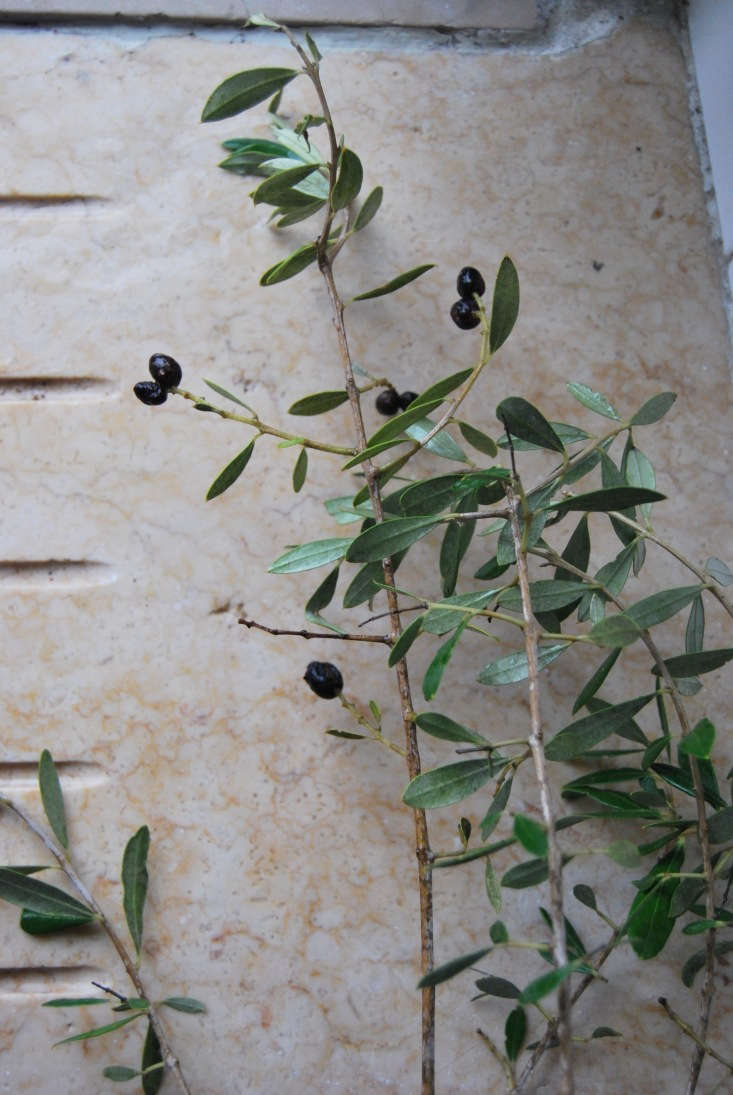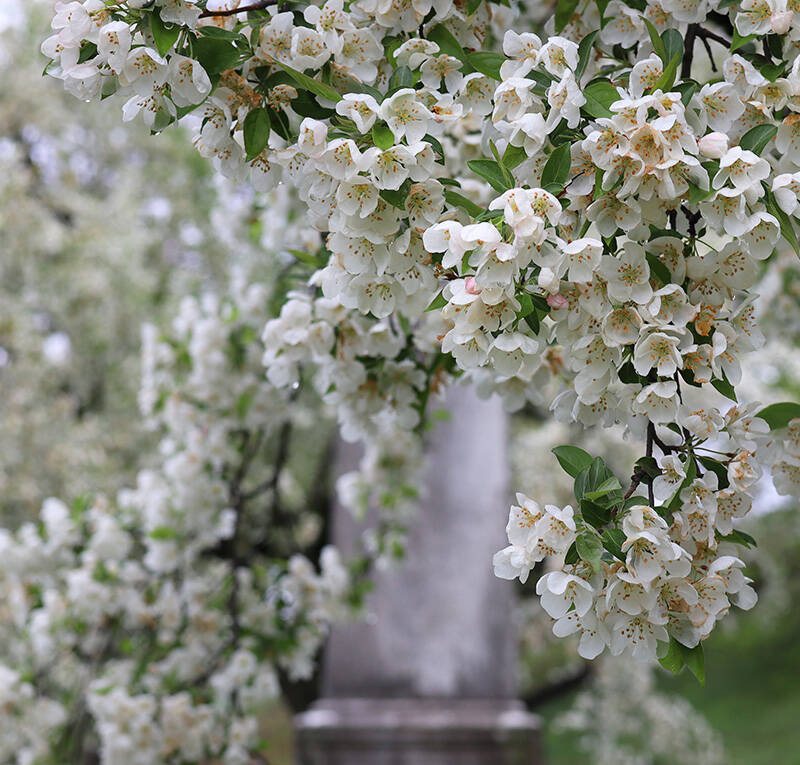Olive trees are common in Mediterranean climates where olives and their oil are a mainstay of the cuisine. But the leaves and branches have also been used throughout history for different purposes. The ancient Greeks wove the leaves into crowns for Olympic prizes and the branches and oil were used in religious rituals and offerings.
In modern-day flower arranging olive branches are often added as a filler, for a simple wreath, or thrown in a bud vase for a casual centerpiece. But what if the olive branches were the show for a modern, artful arrangement? Olive greens will last for weeks in water. They are woody stems so you can crush them or slice the stem upwards to assist with their intake of water. Added with dried materials, an arrangement like this might stay fresh up to a month in your home.
Read on for step-by-step instructions to recreate a floral arrangement with olive branches:
Photography and styling by Chelsea Fuss.
Step 1: Gather Materials

I wanted to play with the silvery green of the leaves by adding lighter dried materials to contrast and provide texture. I added mimosa stems (which have not yet opened) and flowers that offer a hint of pastel yellow.


Step 2: Choose a Vase and Base

Using small stones as weights is a perfect trick when you want to play with proportions and use a natural method to secure stems. It’s also more attractive than foam or wire, and blends in seamlessly with the composition.
Step 3: Create a Shape

First I created an asymmetrical shape with two small olive branches with fruit and a taller, more curvy branch.
Step 4: Add Dried Materials

Next, I added dried ingredients and the stem of mimosa, leaving plenty of negative space to appreciate the curves of the leaves and textures of the dried materials.
Step 5: Add Texture

I like both sides of the olive leaves. One side is a brighter green, the other a silvery gray. I make sure both sides of the leaves are seen from each side of the arrangement, to add interest and depth.
The Floral Arrangement

N.B.: Olive trees also add silvery depth to a landscape (or, if they are small, in planters). See some of our favorite examples:
- 10 Garden Ideas to Steal from Greece.
- The Novice Gardener: Help, Can This Olive Tree Be Saved?
- 10 Garden Ideas to Steal from California.
- And don’t miss the rest of our Rethinking Flowers series: see our recent posts on Anthuriums, Carnations, and Wisteria.












Have a Question or Comment About This Post?
Join the conversation (1)